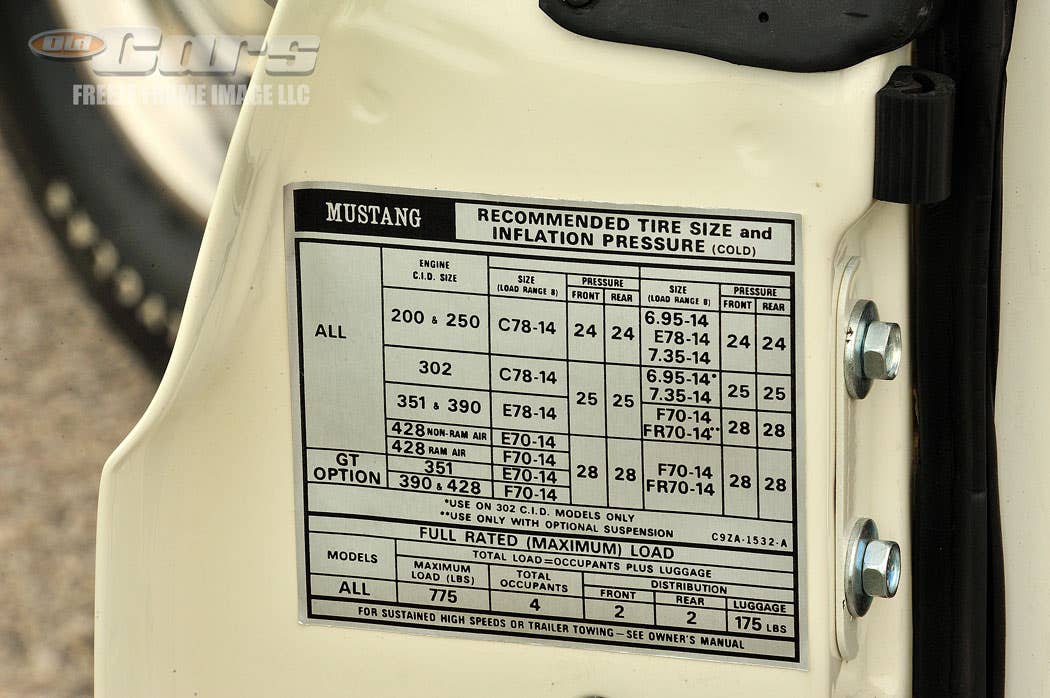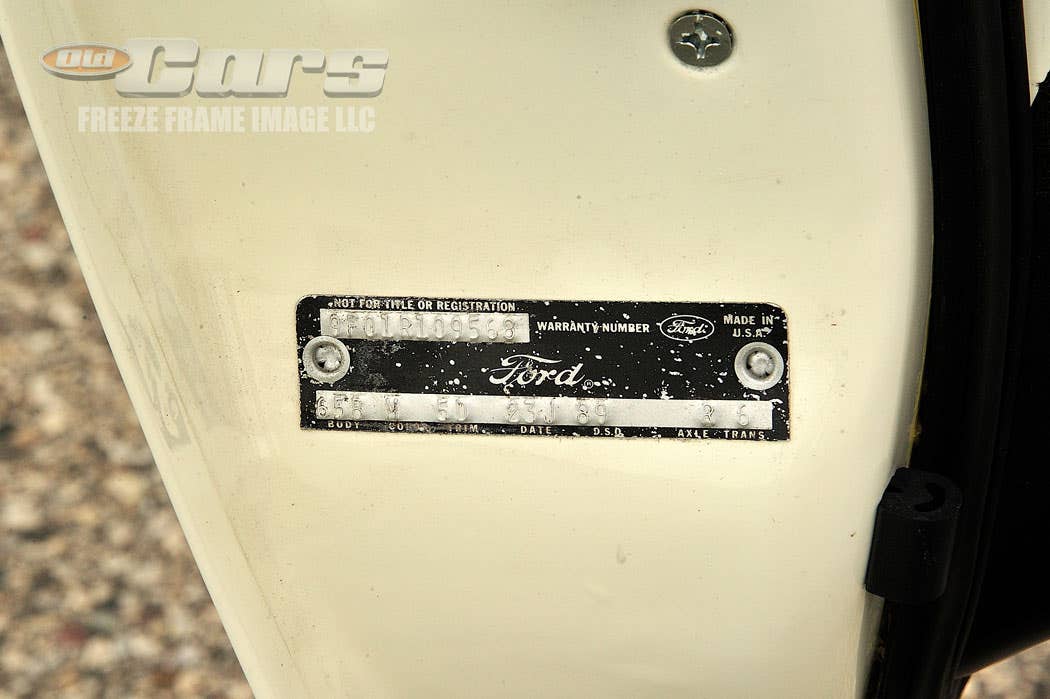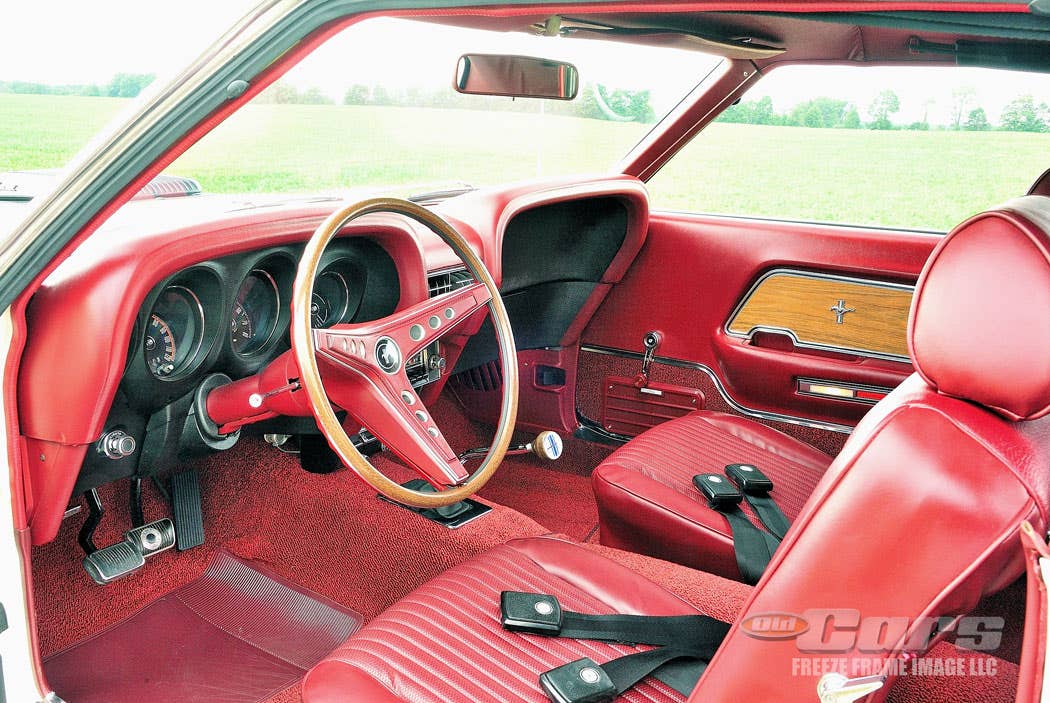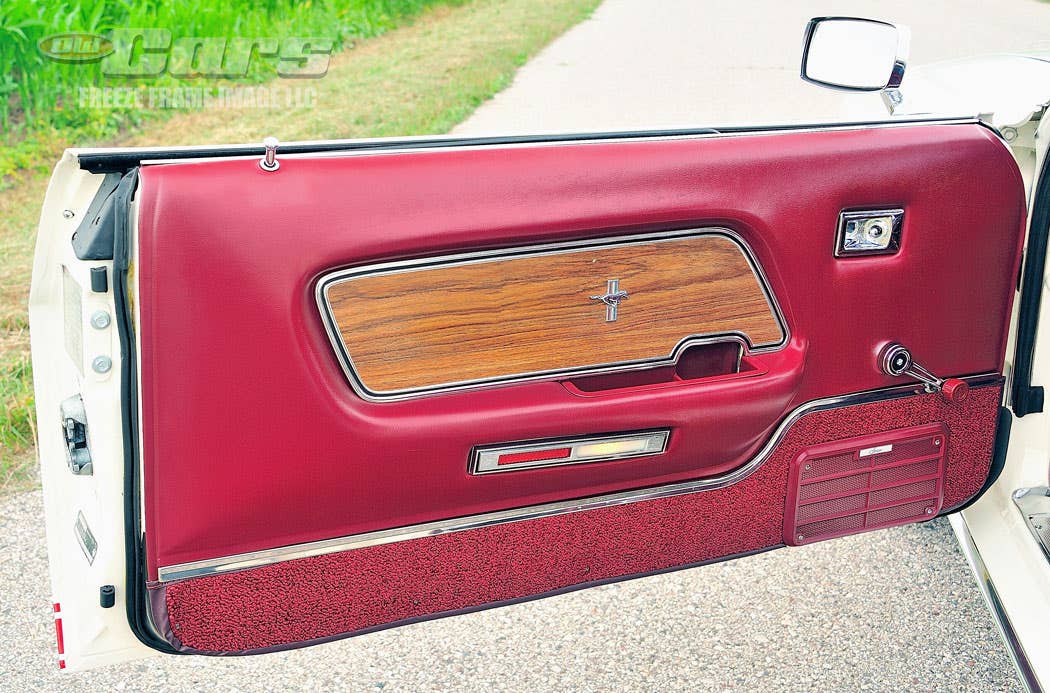In 1989, Henry Isaksen, an architect from Sturgeon Bay, Wis., received a phone call from Roger Strege, a local building inspector and longtime friend who told him there was a white 1968 Shelby sitting in a barn only minutes away.
“I don’t know a whole lot about its condition,” Strege told Isaksen. “A client told me about it, but he’s never been to the barn to see it in person.”
During a prior conversation, Isaksen had mentioned to Strege that he had an interest in buying a Shelby.
“I’ll come by, pick you up and we can go check it out,” Strege said. “It might be worth your time to see it in person.”
Isaksen asked Strege for the location, and when his Strege shared the address, Isaksen couldn’t believe it.
“Are you kidding me?,” Isaksen asked. “I’ve known the owners of the property for years; they live less than 10 miles from me.”
Isaksen and Strege drove to the property. When they arrived, Isaksen said, “I can’t believe we might have found a ’68 Shelby here.” They walked into the barn and were greeted by a man, and when asked, the man confirmed he was the owner of the car. He’d recently bought it and needed a place to store it. The owners of the barn were family friends and offered to store it for him.
An R-code surprise
From a distance, Isaksen looked at the weathered, white rolling body shell and immediately knew that it wasn’t a ’68 Shelby. Instead, it was a rusty, disassembled 1969 Mustang GT hardtop coupe missing the engine and rear end. Even though it wasn’t what he was looking for, Isaksen looked at the car’s VIN and something caught his eye. The VIN contained an “R,” indicating this coupe left the factory as a Ram Air 428 Cobra Jet car. He asked the owner what had happened to the engine and rear end. His response was, “I bought it like it is, pretty much a rolling chassis, and my plan was to put a 390 engine into it and make it a daily driver.”
The Shaker hood was lying flat across a few bales of hay; the scoop and a four-speed transmission were nearby. Before leaving, Isaksen asked if the car was for sale, and the owner indicated he might be interested in selling it.
“I left that day with a lot of unanswered questions, my curiosity piqued,” Isaksen recalled. “The car had intrigued me; I knew it was a rare Mustang. I returned to the barn a few days later with Jim McKuen, a knowledgeable Ford mechanic who knew a lot about these Cobra Jet Mustangs. We looked around for a while, then Jim poked me in the ribs and pointed at the four-speed transmission. Jim said, ‘That’s the right four-speed for this car.’ We stepped aside and he said, ‘If you can buy the car, do it. This is a rare Mustang and worth restoring.’”
Upon hearing McKuen’s recommendation, Isaksen made the owner an offer and he accepted, but before handing over any money, Isaksen wanted to make sure everything came with the car, including the four-speed transmission. Reluctantly, the seller agreed to include it with the car. It turned out to be the first step to a decades-long journey from a rolling chassis to a concours-restored 1969 Mustang GT hardtop.
Documenting a Ford test car
After getting the Mustang home, Isaksen knew that he’d made the discovery and purchase of a lifetime. Once he started researching the car and breaking down its VIN, the rarity of the ’69 Mustang GT hardtop started to become much clearer. According to the 428 Cobra Jet Registry, for the 1969 model year, Ford produced a mere 86 GT hardtop coupes with the R-code 428 CJ and four-speed transmission. He also learned the district sales office (DSO) code of “89” in the car’s VIN represented “Transportation Services,” indicating that the car was ordered for Ford use, perhaps for testing or as part of an in-house fleet.
Fortunately for Isaksen, Lois Eminger, a Ford employee who sold copies of original Ford invoices for many years, provided copies of the hardtop’s factory invoices, so Isaksen quickly learned that his GT hardtop had originally been sold to Ford Division Product Engineering on Sept. 20, 1968, for delivery to the I.R. Building Garage in Dearborn, Mich. The invoices also confirmed the car’s original options: GT Equipment Group; 3.25:1 Traction-Lok differential; F70x14 white-letter tires; Wimbledon White paint with red Interior Décor Group; AM Radio; front head restraints (headrests); power steering and brakes; and Power Ventilation.
Isaksen continued his fact-finding mission to learn the GT hardtop’s history. He sent a letter to the editor of Old Cars, who published his plea for information in the “Letters to the Editor” column. Isaksen knew he had found the needle in a haystack when he was contacted by Old Cars reader Tom Sherman, who told Isaksen that he had purchased the Mustang GT hardtop with 6,800 miles in March 1970 from Van Drisse Lincoln-Mercury in Green Bay, Wis.
“At the time of the purchase, the dealership told Tom that they had received the CJ GT hardtop with other cars ordered from Ford,” Isaksen said.
“In order to get cars they wanted, dealerships were occasionally required to take cars Ford wanted to get rid of,” Sherman told Isaksen.
A pair of Ford invoices, one dated Sept. 20, 1968, and the other dated Oct. 17 with updated pricing, each listed a code number and a name: “306-T-763, C. Jones.” That information provided Isaksen with another clue to chase, leading him to Utah restorer Armond D’Agostini, who also owns a 1969 R-code hardtop with a “T” number and “C. Jones” on the invoice.
Armond explained, “His name was Chet Jones, and he was the Ford engineer who ordered the car. He passed away, but I managed to get to know one of his younger engineers.”
Through the contact, Isaksen came closer to discovering his 1969 GT hardtop’s original use at Ford.
The engineer wrote, “Chet Jones was an engineer in Car Vehicle Development in the Experimental Vehicles Building at the Dearborn Proving Grounds. He worked in Powertrain Development where we tested prototypes with future engines, transmissions and drivelines to verify that they performed acceptably and met Ford’s Acceptance Specifications for drivability. Chet ordered production vehicles for development departments. Usually, these cars were tested to verify that the production cars met the same standards as the prototype vehicles, which had been tested months prior to normal production start-up.”
The engineer further explained, “Our test vehicles, whether prototypes or normal production, had a ‘T’ assigned to them, like the 306-T-763 on your invoice and on the brass tag that would be attached to your car’s radiator core support. The ‘T’ stands for test vehicle; pool cars had a ‘P’ in their number. After the development department was finished with the vehicle and since it was still a valid production vehicle with a VIN, it was transferred to the ‘B-lot’ where used company vehicles were sold to employees or Ford dealers. Apparently, your vehicle was bought by a Ford dealer, maybe the one in Green Bay, WI, where the first owner bought it.”
Bringing back the Mustang GT
Isaksen’s persistence and fact finding had discovered far more than he expected. As if the hardtop didn’t already have enough going for it as a rare GT R-code 428 Cobra Jet muscle car with a four-speed, Isaksen had also uncovered an intriguing back story to the car. As such, the rough Mustang doubly deserved the restoration that Isaksen had already begun undertaking. One of his first steps was to employ the services of Jim Cowles from Shelby Parts and Restoration, who agreed to collect the necessary parts to build a date-code-correct 428-cid V-8 Cobra Jet replacement engine.
In 2016, some 27 years after acquiring the Mustang, Isaksen gave Cowles the green light to start a complete restoration to return the rest of the car to its factory-built condition, as delivered to Ford Engineering in 1968 as a test vehicle. For body and paint, the hardtop was sent to Troy Kuyoth Body and Custom in Strafford, Wis., where it was completely disassembled and mounted on a rotisserie for sheet metal work and paint application. Later, in the fall of 2020, with the reassembly well underway at Shelby Parts and Restoration, Isaksen got a call from Jim Cowles.
“Jim wanted me to know that he had been diagnosed with a cancerous brain tumor,” Isaksen said, “As a result, he had sent my car and several others to Troy Kuyoth for completion. Jim passed away on January 4, 2021.”
Kuyoth completed the restoration last May. Because the brass tag was missing when Henry purchased the car, an accurate replacement was recreated and obtained from Mustang expert Ed Meyer. Kuyoth delivered the GT hardtop to Isaksen on June 11.
“That was the first time I ever sat in the car,” Isaksen said.
After 33 years of research, documentation, fact finding and many years of looking at the rusty and weathered Mustang GT hardtop in his garage, Isaksen can finally enjoy the results of his dedicated investigation and relentless determination to add an intriguing backstory to a rare and interesting Mustang muscle car.
A familial fondness
Isaksen and his wife, Jean, have two sons, Jeff, and Marc. When the boys turned 16, they were allowed $5,000 for a car. At least one of their sons was inspired by the 1969 Mustang GT coupe to own a Mustang of his own.
“In 1986, Jeff asked for a new Chevy Cavalier,” Isaksen said. “In 1988, Marc requested a 1969 Mustang Mach 1. We finally located one in Kansas City.
“Ultimately, Marc spent a lot of time and money on the Mustang, but eventually ended up selling it to a local mechanic, who finished it and resold it,” Isaksen said.
Although his Mach 1 is gone, Marc still shares a passion for Mustangs with his father. He helped his father prepare the car for its photo shoot, and during the process, the two shared stories about the journey the family had been on with the ’69 Mustang GT hardtop from the time it was discovered and purchased and the decades it took to see it returned to its factory form.




SHOW US YOUR WHEELS!
If you’ve got an old car you love, we want to hear about it. Email us at oldcars@aimmedia.com
If you like stories like these and other classic car features, check out Old Cars magazine. CLICK HERE to subscribe.
Want a taste of Old Cars magazine first? Sign up for our weekly e-newsletter and get a FREE complimentary digital issue download of our print magazine.








